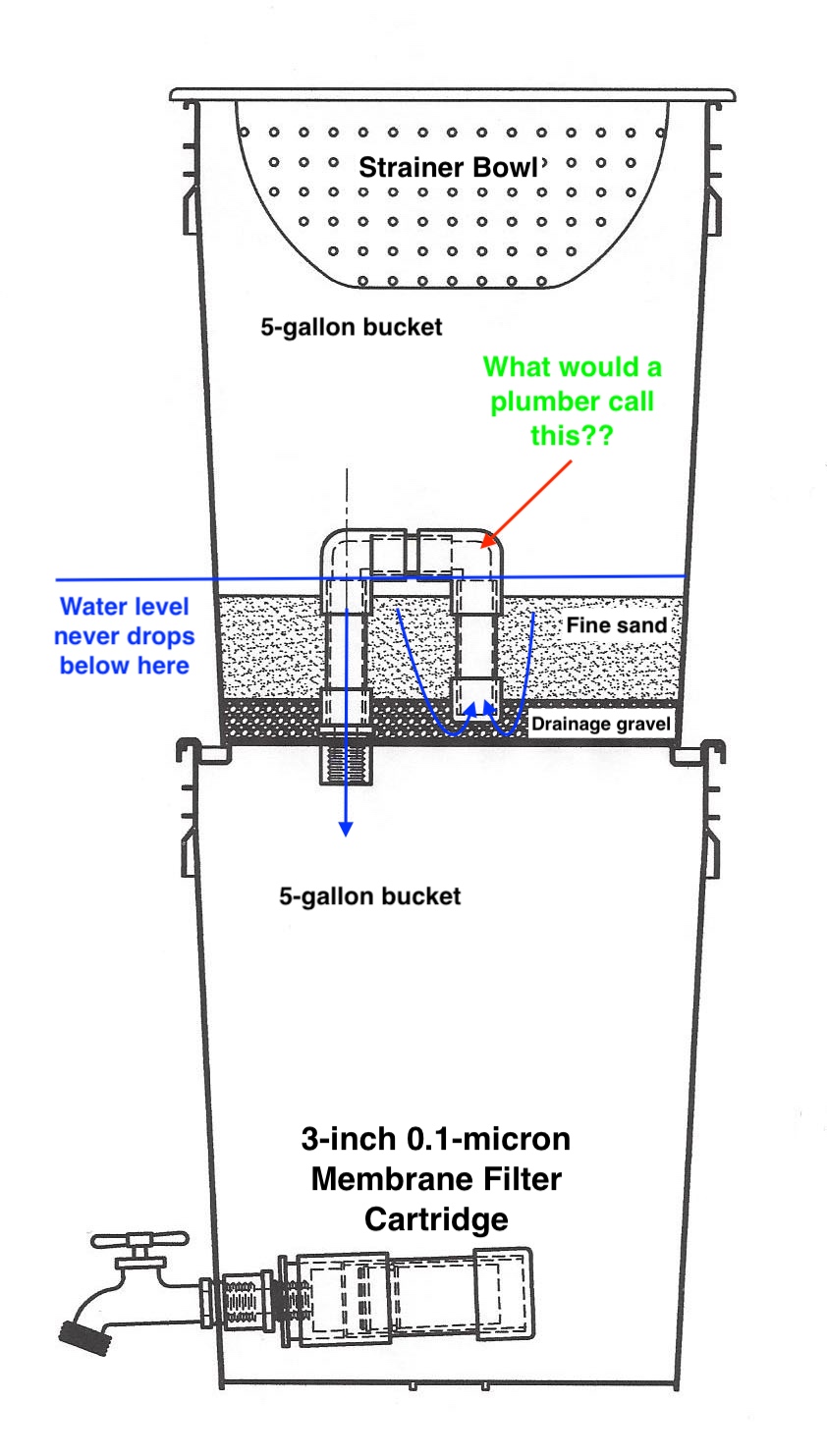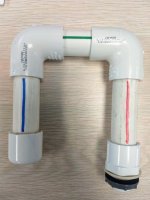Chiperific
New Member
Hi, turning to the pros for help finding a good descriptive name for this 1/2-inch PVC horse-shoe-like fixture.

This is a 3-stage water filter that my organization developed for use in rural communities in the developing world. It's made from common PVC components, two 5 gallon buckets, and a 3-inch 0.1-micron hollow-fiber membrane filter cartridge.
In the top bucket, we use a few inches of sifted and washed sand as a pre-filter to remove sediment, turbidity, etc.
The "half-loop" of 1/2-inch SCH 40 PVC has a few purposes:
We've been calling this the "sand pre-filter", but that's a terrible name. The *sand* is the pre-filter.
This PVC component is some sort of reverse-trap, or ant-siphon, or elongated bulkhead ...
We need a better, more aptly descriptive name for it. What would you call this thing?
More pics attached.
Thanks in advance.
- Chip
P.S., the organization is: https://20liters.org if you wanna see more about the filter itself.

This is a 3-stage water filter that my organization developed for use in rural communities in the developing world. It's made from common PVC components, two 5 gallon buckets, and a 3-inch 0.1-micron hollow-fiber membrane filter cartridge.
In the top bucket, we use a few inches of sifted and washed sand as a pre-filter to remove sediment, turbidity, etc.
The "half-loop" of 1/2-inch SCH 40 PVC has a few purposes:
- It has three 1/16" holes drilled in the end cap to allow water to enter the system. (and a 50-mesh metal disk inside to keep the sand from entering the system). This ensures the water has first filtered through the sand bed.
- The height of the pipes sets a water level that keeps the sand underwater, which keeps the water channels open, and prevents mud and clay from drying and hardening on the top of the sand.
- The male adapter passes through the bottom of the bucket and lid (a make-shift bulkhead fitting) to transfer water to the lower bucket.
We've been calling this the "sand pre-filter", but that's a terrible name. The *sand* is the pre-filter.
This PVC component is some sort of reverse-trap, or ant-siphon, or elongated bulkhead ...
We need a better, more aptly descriptive name for it. What would you call this thing?
More pics attached.
Thanks in advance.
- Chip
P.S., the organization is: https://20liters.org if you wanna see more about the filter itself.


